Launching an ecommerce brand is no easy task. It can be hard to break through the noise of “what is right?” or “what should I do first?” We created the ultimate launch guide for ecommerce brands so you can better understand the fundamental set-up process for a successful ecommerce launch.
From the initial set-up and to the initial launch, we will lay out the most impactful processes we apply when working with multi-million dollar eCommerce brands.
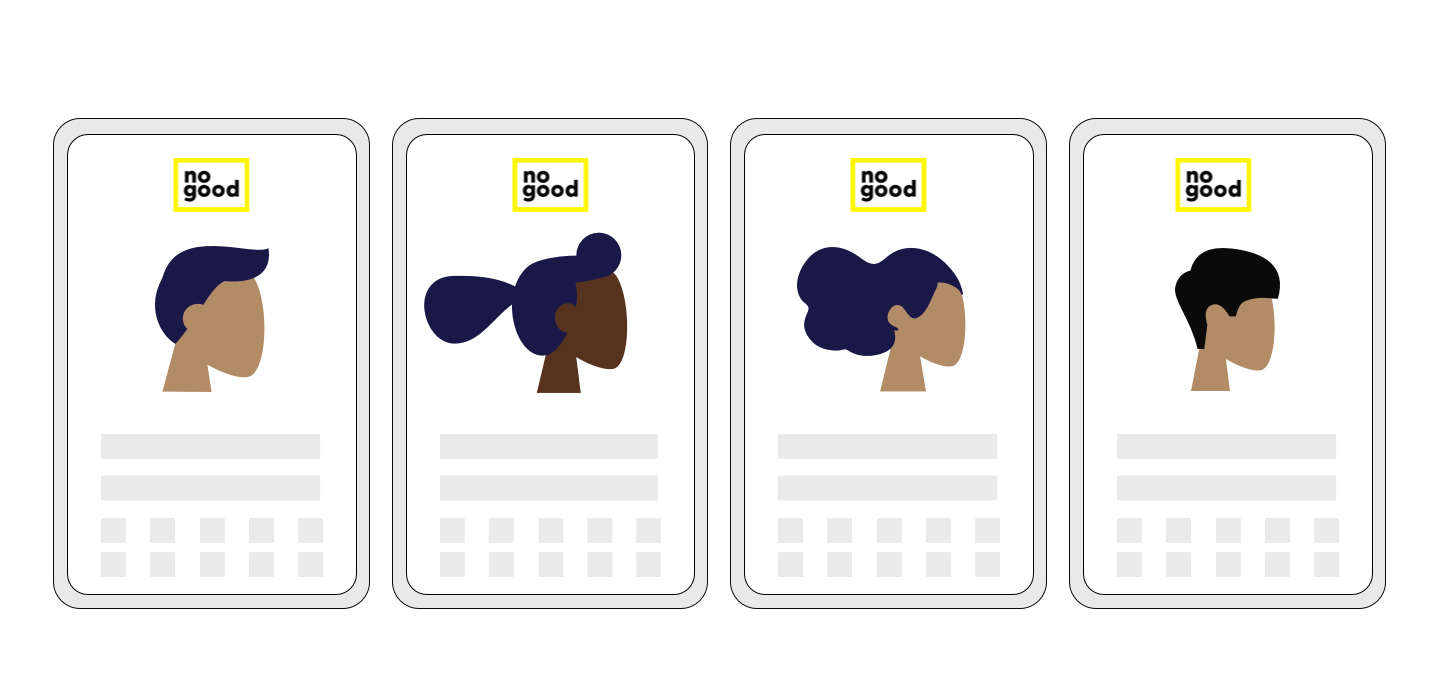
1. Create a Buyer Persona
Understanding your audience is by far, and with no competition, the most important part of your launch. The level of knowledge you hold about your ideal customer will make or break the success of your brand.
Buyer Personas are a dynamic layout of who your ideal audience is. They allow us to conceptualize the traits and behaviors your ideal customers express in their lives.
You should use buyer personas to make calculated assumptions about:– Where to market our products first?
- Where to market your products first
- Where your customers consume content
- What sites your customers visit
- What other behaviors your customers exhibit online
- What challenges your customers face, and how you can solve them
Breakdown of a Buyer Persona
Demographic Information
- Job Status,
- Marital Status,
- Gender, Age
- Income Level
- Communication preferences (call, text, email)
Motivational Information
- What keeps them up at night?
- What challenges do they face?
- How can you solve their issues?
Rebuttal Information
- Testimonials describing their problem
- Common objections related to solving the problem
Messaging Information
- Product benefits to solve their problem
- Elevator pitch to describe how this solves their problem
Every section in our buyer’s persona can be a clue into how we should establish our targeting, and how we should position our product. This ensures we are speaking our audience’s language, so they know we understand them – and can solve the issues they are having with our product or service.
As with every business, there must be a real value proposition for the customer – if there is no value for the customer then you should consider changing your product to meet the demands of the market a.k.a your customers.
Note: Your business may have multiple audiences in which case you will need to create a buyer’s persona around them individually to understand what separates your audiences. This will help align your product benefits and positioning across different audiences.
Tools to help create a buyer persona
Many resources can help you craft your buyer’s persona, for instance on Facebook. Inside your ads manager, within the Audience Insights tab – you can sort audiences by location, gender, interests, pages they follow, and more.
Audience Insights can contextualize what behaviors your potential customers are making, so you can easily refine your buyer’s personas.
Additionally, for Google marketing – consider researching In-Market Audiences.
Most marketing platforms will provide resources so you can make informed decisions about your ideal audiences so make sure to leverage thorough research before launching!
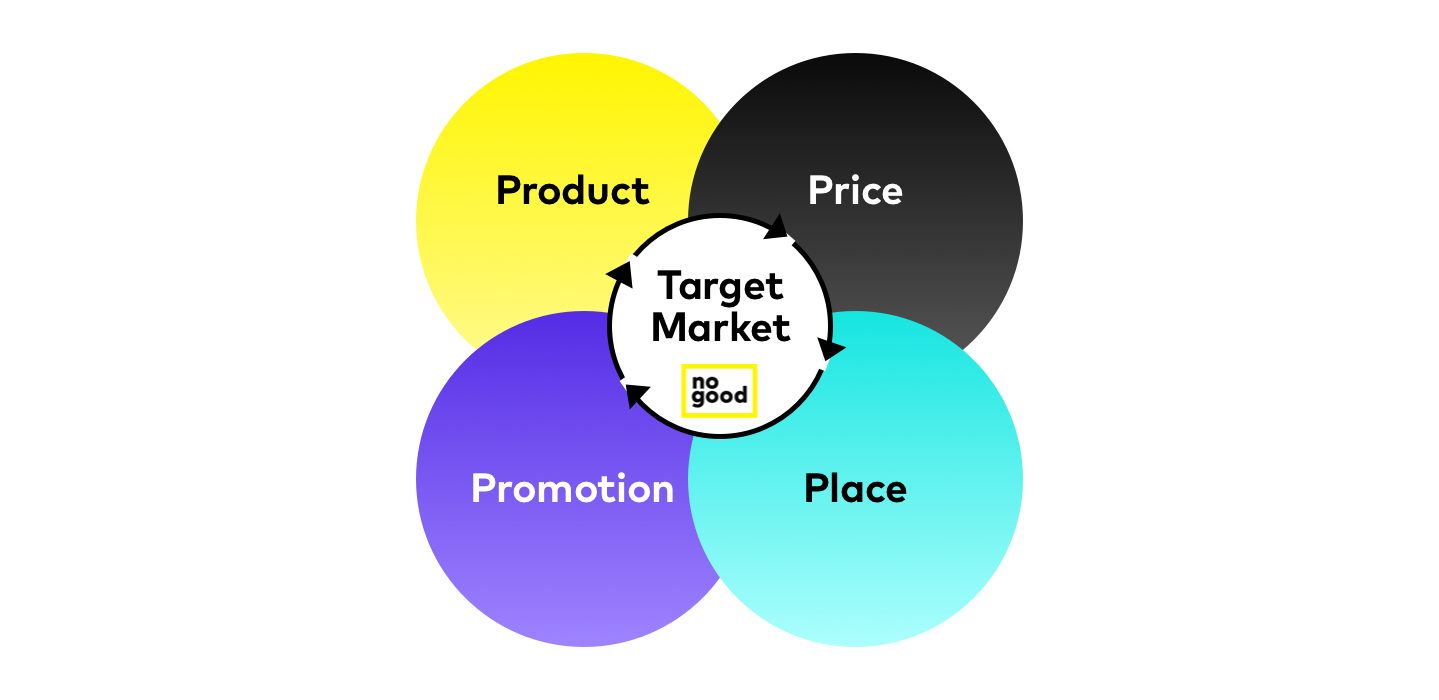
Need Help Optimizing Your Ecommerce Business for Conversions?
2. Develop Product Messaging & Positioning
Now that we have a baseline understanding of who our potential customers are; where they may be engaging online, and what problems they face – we can craft our messaging to address and hopefully (if your product is tried and true) solve their problems.
As mentioned before, a value proposition must exist for a business to succeed – otherwise, there won’t be a product-market fit. Product-market fit will dictate whether or not customers care to purchase your product, whether they will repeat purchase – all tying back to the value proportion your business serves to offer them.
The good news is, product messaging and positioning is subjective – so you can test many different ways to illustrate what your product does, what problem it solves, and why customers should buy it. So long as you stay true to your core business offering, do not overhype or oversell your value – customers will experience the business for themselves and make a vivid conclusion as is, so we don’t want to tell them about something we don’t have or offer.
While there may not be a “right way”, there is surely a wrong way. The way you position your brand or products will affect how your customers see you, so it’s crucial to align your messaging with the ethos of your company.
Consumers care about who they purchase from, and the more connected you can make them feel – the better! Focus on balancing your value proportions and your company’s ethos – you want to be tactical in showing consumers your product but you need to leave room to tell them who you are as well.
Note: Don’t just sell, sell, sell! People also want to know why you exist, who you are, why your company started, your charitable causes, etc.
Once we have done enough brainstorming we may begin sorting out the rest of our launch plan – starting with our website.
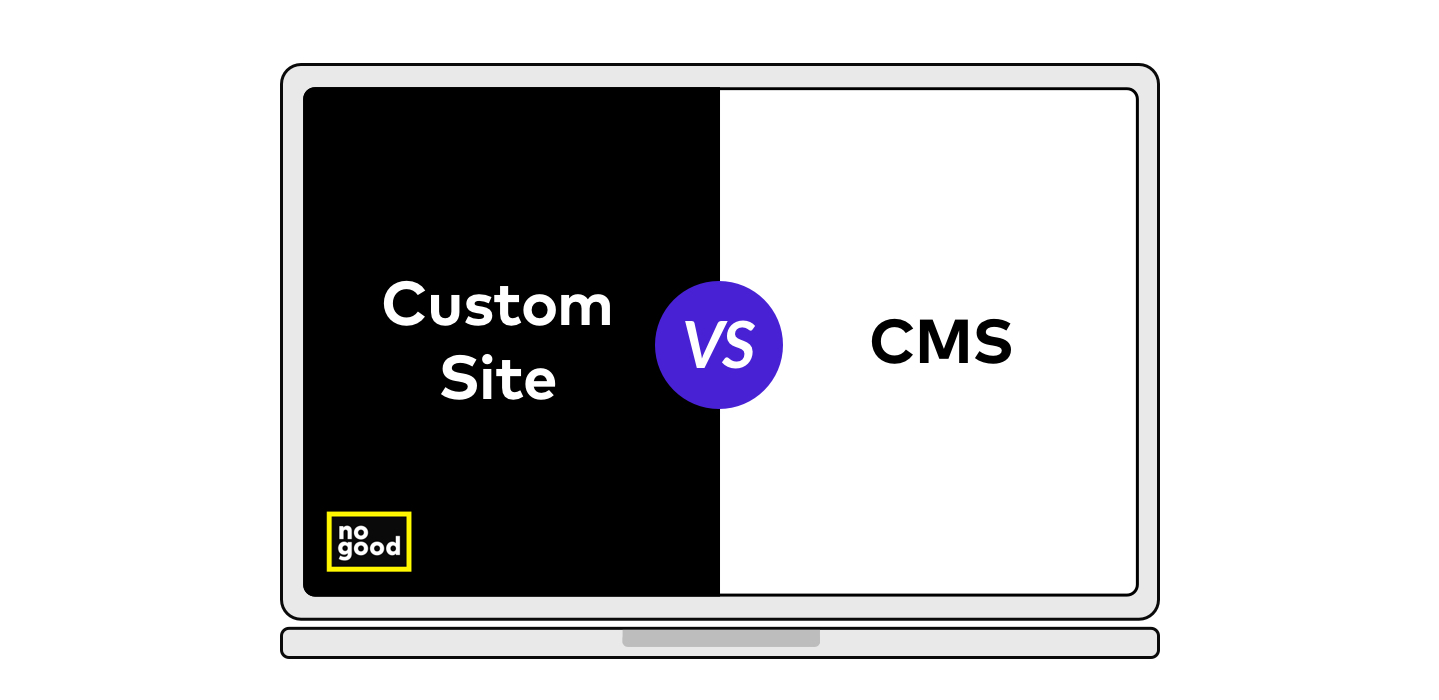
3. Create your Ecommerce Website
Your customer’s journey starts with your website, the appearance that you show your potential buyer will also translate into how they feel about your brand, and whether or not they will purchase from you.
It’s extremely important to create a website that can scale and adapt to your business.
Unfortunately, websites are not created equally – so it’s vital to understand the differences between a custom-built website, and a CMS website.
Companies like Shopify, Magento, BigCommerce, Squarespace, and more have created easy-to-use, no-code platforms that give you virtually every tool you will ever need for a website.
These are called CMS (Content Management Systems), such platforms have built the foundation for ecommerce as a whole, providing a centralized platform so people around the world could sell products online without having to hire a team of developers just to manage their websites.
We are proud supporters and users of CMS websites, but we must inform you of the differences!
Custom Websites for Ecommerce
A custom site is not ideal if you are just starting. Simply put, the time you would spend managing and upkeeping your custom-built site would far exceed the time it takes to create and launch a CMS website.
Custom websites may be a promising idea when you consider it an open sandbox which you have full control over – but consider this, you may not be a developer, or have the technical expertise to manage a custom website. Who will you turn to
A custom site requires you to host your own domain, manage your own front-end (what the customers see), manage your back-end (your product information, pricing, etc.), and integrate it all into a cohesive website that users can purchase from. This is not impossible, but much more effort than using a CMS like Shopify.
CMS Websites for Ecommerce
In theory, a CMS website has the same parts, but a CMS already has these tools built for you. Shopify for example gives you a simple interface to manage all aspects of your store without the need for a single developer. Whether it is the front end, back end, shipping policies, fulfillments, checkout process, or anything else – Shopify has already created the groundwork so we can avoid the pitfalls of managing your own custom-built site. Lastly, CMS companies like Shopify offer support so you always have somewhere to turn if you need additional help.
This is why we wholeheartedly recommend you use a CMS tool just like Shopify. Shopify also includes site hosting and checkout process into their paid plans as standard – which is not something all other CMS platforms offer. For these reasons, we believe a CMS website is the best value.
Now that you have an understanding of custom sites vs. CMS platforms, we will begin diving deeper into strategies we use here at NoGood when we work with direct-to-consumer ecommerce brands.
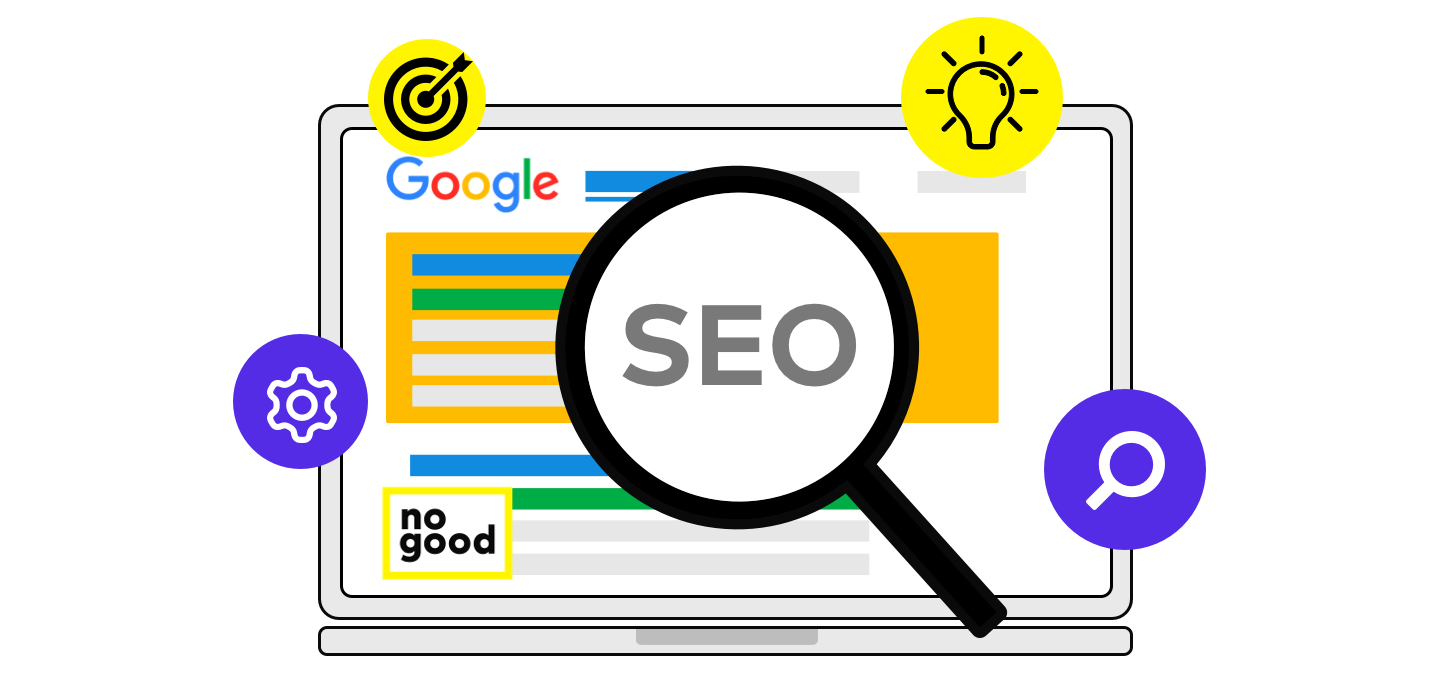
4. Optimize Your Ecommerce Website
We have too often seen brands disregard SEO as a strategy for growing their revenue, but this could not be further from the truth. If you, too, have disregarded SEO, worry not – there is always a way to grow your ranking across search engines!
The reality is, your customers will search the internet at some point. They may search for the exact product or service you provide, so you need to make sure you have a chance at appearing in front of them when they do. If they see you, they might like you, and they might buy from you.
First things first, here are the foundational things your site needs to have updated at all times to appear in searches:
Page Title: The title that describes your page
Meta Description: The description that describes your page
URL Slugs: The ending of your links that guides users to specific pages
Image Alt Text: A description of an image
In most cases, ecommerce brands follow a similar structure — a homepage, collections pages, and product pages – all of which have their own page title, meta description, anchor link, and image alt texts. The more pages you create, whether as collection pages or individual products, the more signals you may be able to rank for. Just remember, SEO is organic – meaning you do not have to pay for it.
So taking the time to refine your website information could greatly benefit you in new users and new purchases.
Page Title
As simple as it may seem, your page title plays the biggest role in whether or not you will rank. Page titles should be concise and relate to a specific keyword(s), so that Google as well as your potential customer can quickly understand what content your page has. For example: If you sell comic book-themed sneakers, you may want your page title to be “Comic Book-Inspired Sneakers” or “Sneakers Inspired by Comics”.
Although SEO is a matter of whether or not Google will rank you, you also want to be customer-centric – meaning you want to make sure your potential customer has an easy time understanding what your website has to offer.
Tip: Do not stuff keywords in your page title assuming that it will work. Focus on your main keywords and write with your customer in mind.
Meta Description
Your meta description serves alongside your page titles. This section gives you a chance to go more in-depth about what your page offers. Using our previous example, a good meta description would be:
“Shop comic book-inspired sneakers, handmade to order in the USA. Browse a variety of collections from Marvel and Capcom to X-Men and more.”
Meta descriptions are that simple. This is the area where you can provide more context for your users and help guide them into understanding, whether or not they are interested.
In our example, notice that the sentence is conversational while still holding keyword value to our original product offering. This is a balance you want to keep on one hand, you need to include our main keywords like “sneakers” or “comic book” but on the other, you are also giving our users a glimpse into which designs you offer like “Marvel” or “Capcom”.
This way, you have given your potential customer enough information about what you sell without them even having to see your website.
URL Structure
URL slugs are the ending parts of your page links, which also play a vital role in telling Google what you want to rank for.
For example, in this page link “mywebsite.com/collections/comic-book-sneakers” the URL slug is “comic-book-sneakers”.
This portion of your link serves to correlate a specific part of your site, and what kind of content may be found on it. Google sees this link and aligns it with searches that relate to “comic book sneakers”.
As you can picture now, every single collection page and product page on your website has an URL slug – so you want to thoroughly review each page and make sure those URL slugs relate to the product or service you provide so that users can find you. Your slug should ideally be the keyword you want your page to rank for.
Image Alt Text
Now, let’s talk about image alt text, which is arguably the easiest way to rank higher in organic listing mainly because so many other brands are lazy to set them up.
Image alt text is an accessibility feature used across the internet to help visually impaired users understand what contents exist within an image.
Google, among other search engines, uses image alt text as a signal of richer content. Rich content can be a vague term that applies to more than image alt text, so don’t be confused by this – videos are also considered rich content. Either way, the richer your content, the more search engines will favor your pages.
Image alt text should be set to describe the image simply. We want search engines, as well as potential users, to understand what this image is, so we recommend writing short but descriptive alt texts. Take this moment to introduce keywords that relate to your image as well. While this is not the biggest factor in ranking a singular page, it could help you outrank your competition.
Once your website is set up, you’ll need to do regular site audits to help you resolve any technical SEO issues that arise.
Want to learn how to conduct a technical SEO audit step-by-step?
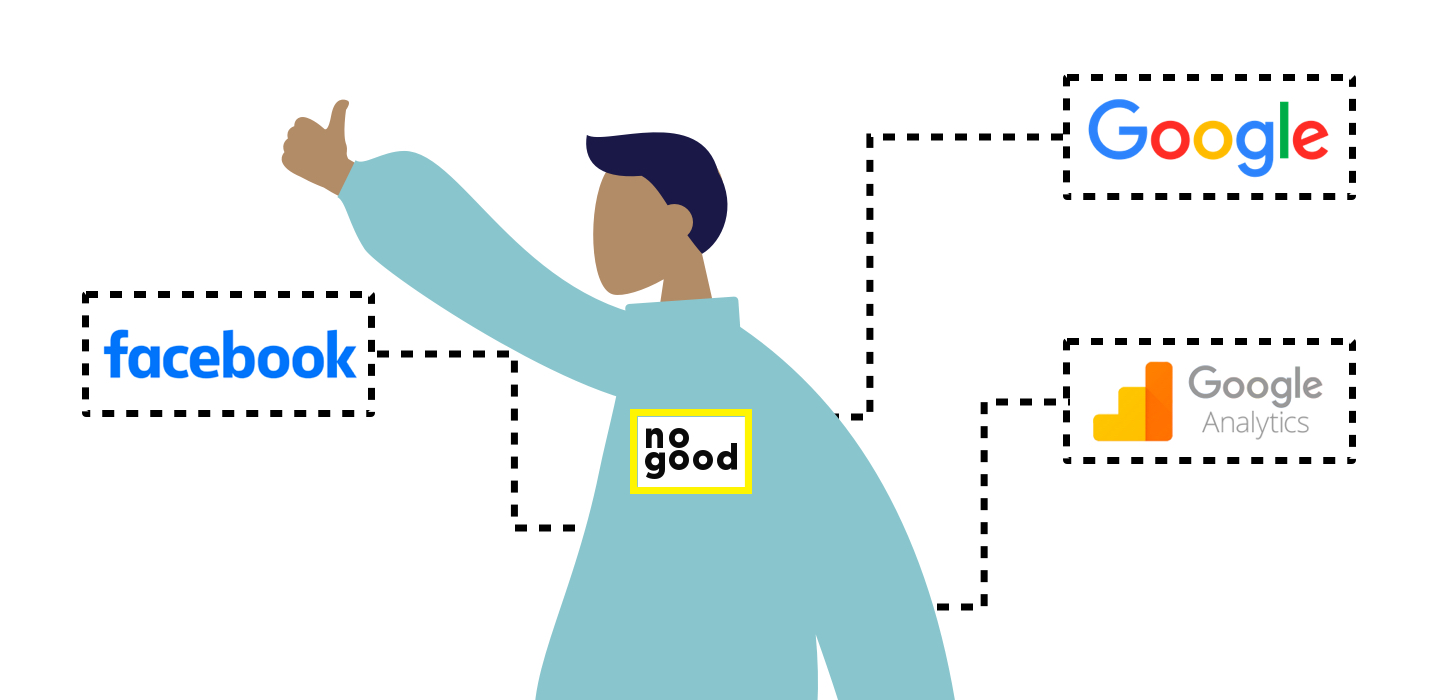
5. Leverage Conversion Tracking
A conversion could be any action your user performed that you deem valuable. A purchase is a conversion, and an add-to-cart could be a conversion, etc.
Leveraging conversion tracking is the most vital part of any successful ecommerce brand.
We must know what actions our users are taking on our website to increase conversion and/or improve the customer experience.
Conversion tracking serves a dual purpose when utilized correctly. First, it allows us to get performance metrics so we can analyze our bottom line. Second, it gives us a signal into whether or not users on our site are confident in browsing, clicking, or purchasing from us.
The ideal situation for your ecommerce brand is to create conversion events around the actions you deem most important – in doing so, you create a “funnel” that represents where the user was along their journey on your site. Let’s break that down.
For our comic book sneakers store example, you should care about several moments the user may have. First, you want to know if a user has viewed a product. Then, you would like to know if they added that product to their cart. Lastly, you want to see unique purchases.
This funnel goes as follows:
Product view -> Add to cart -> Purchase
So, this is your user’s journey; using this, you can monitor which parts of our site you need to focus on the most. If users do not purchase, it is safe to assume that something along their journey in “product view” and/or “add to cart” went wrong.
Were they not interested in the product after all, why?
Was the price too high?
Did the page load correctly?
Did they have a bad connection?
Once you realize where your users fell off their journey on your website, then you can begin to reverse-engineer what to fix. This is the most fundamental approach towards analyzing and improving ecommerce performance.
So, how do you set up conversions?
First off, you will need to to set up Google Analytics to centralize all your conversion events. Google Analytics would serve to collect all your conversions that occur on your website which we can then use to our benefit.
Additionally, you need to decide on other channels which we will use for marketing. If you believe your ideal customer is using Facebook, Google, and TikTok then these are the other locations where you need to set up conversion events.
Google Analytics will remain the “hub” of all your conversion event data, but you still need to set the same conversions on each channel so you can monitor your conversion performance by specific channel. This is extremely important when trying to decide which platform is more effective for your business.
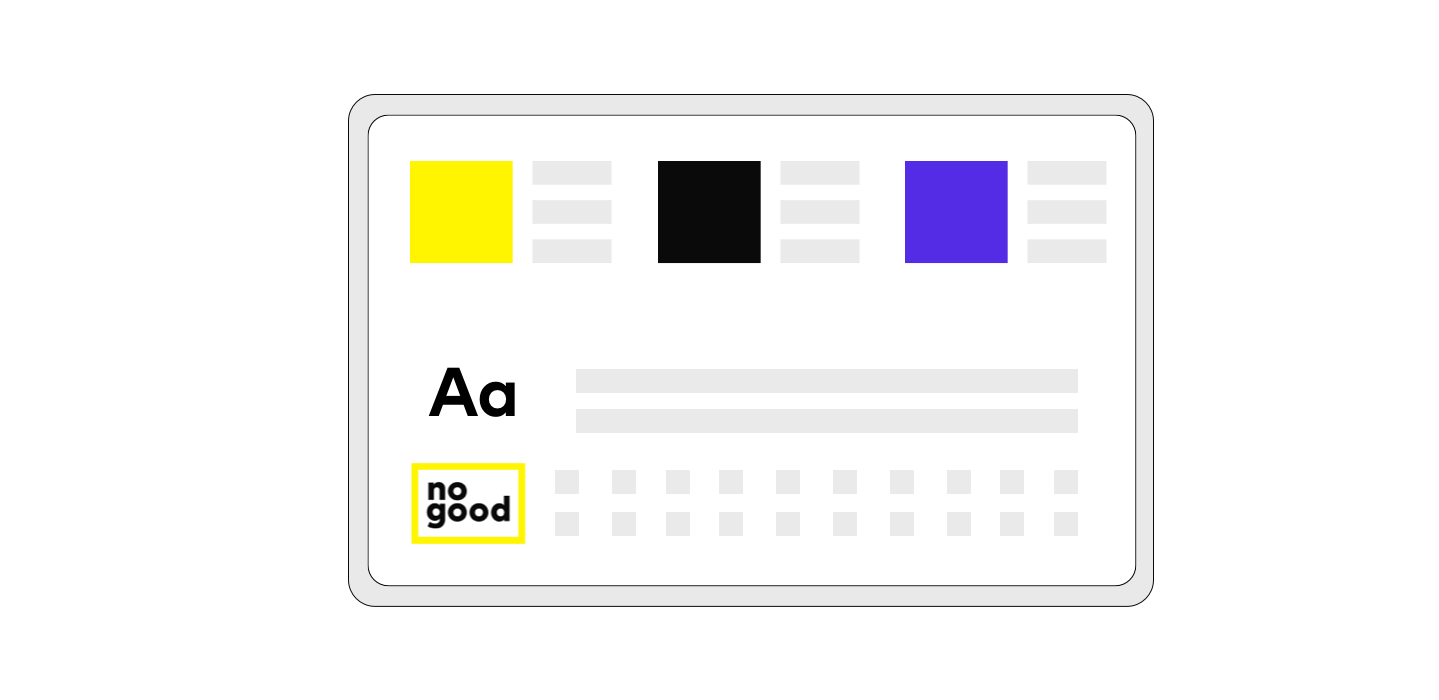
6. Brand Visual Guidelines
Appearance is everything, and the key to a concise website appearance is a well-thought-out brand guideline. The brand guidelines a company uses can make the difference between higher or lower conversion rates a.k.a purchases.
A brand guideline is made of multiple parts: fonts, color schemes, brand assets, and imagery.
The fonts you use will dictate an emotion for your customers. A font like Comic Sans will create an unprofessional and goofy aesthetic, while a font like Museo Sans provides a clean and modern aesthetic. Consider this when picking which font best fits your brand. Color schemes will also portray a mood or emotion for your customers. Color schemes usually consist of a primary color and a secondary color, which are meant to complement each other across your website.
Decide which colors display the emotions you want your customers to have, and factor in which colors will work best together. The combined use of these colors should also align with the overall vibe you want your customers to feel.
Brand assets relate to your logo and how your logo may be utilized across your website or profiles. This includes your logo in different sizes, such as social media profile image size or social media cover image sizes across platforms. Alongside logo size, brand assets must dictate the color versions of your logo. A full color, a white version logo, and a black version logo are the most common types of logos you would use in a brand visual guideline.
Lastly, imagery within your brand guidelines is meant to serve as inspiration for your brand’s aesthetic. Using our previous example of comic book-themed sneakers, imagery for such a product may be comic bubbles or thick stroked edges that resemble a comic book.
The imagery you decide on must have a connection to your products; it must be used as a guide for future content development to provide a cohesive brand identity.
In closing, creating a brand guideline is crucial for maintaining a concise mood or vibe for your brand.
Consistency is key, so prepare a well-thought-out brand guideline so you can begin cultivating your brand’s identity and make your customers feel it.
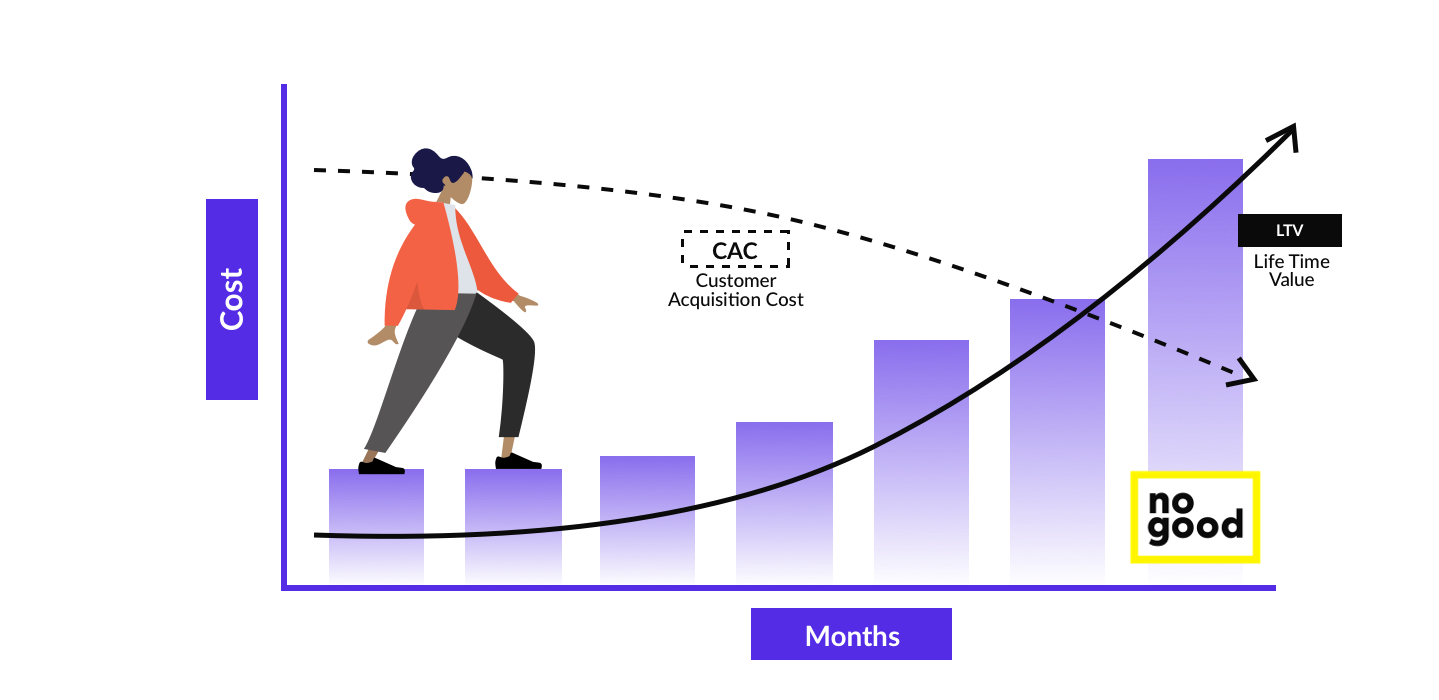
Early Stage Economics for Ecommerce Brands
ecommerce is a competitive stage. Since 2006 (when Shopify launched), a rise in the popularity of online stores has led to a vast choice of products in virtually every niche market. This increased competition makes scaling a new ecommerce brand a challenge.
This section is meant to inform you of the long-term strategy required to find economic success for your ecommerce brand.
In the early stages of launching your brand, you may have lots of ideas about what may or may not work.
You consider your cost of goods, the cost of marketing, your available sales margin and you may think: “How will I be profitable?”
As the saying goes, you need to “spend money to make money.” The same is true for ecommerce; you need to spend money on new marketing efforts to establish what makes sense economically.
Similarly, you need to spend money to figure out what does not work.
When you start you may not find the right strategy right away, but as you try more and more, you will begin to understand through trial and tribulation.
Determine your Customer LTV
Thinking long term, your main metric to follow should be LTV, or Lifetime Value. LTV is the total amount of money you’ll receive from a customer throughout their entire lifetime as a customer. The reason why this matters is that a singular purchase is not a good signal of whether you are profitable in the long run.
So we must have enough purchases and data to fuel our decisions on whether or not to turn off our existing marketing.
You may spend $100 a day on marketing and only get a single purchase. It would still be too early to say whether this is a bad marketing strategy or channel because we first need to analyze our economics. Say you have a 50% margin on your products, and that single purchase equaled an $80 purchase.
The cost of marketing has set your profit to negative, yes – but what if this customer now returns for a second purchase and spends $200 because they really love your product? Has this customer’s LTV justified your marketing efforts?
While $100 to acquire a single customer is a far-fetched example, the answer is yes – our marketing strategy is justified for the time being. Simply put, this singular customer led to profitability after their second purchase.
On the first purchase, we would lose about $60 after the cost of marketing, but after their second $200 purchase we would have turned a profit of $40.
This is how you should look at LTV, and what you should consider when launching your ecommerce brand. At first, it may not look like things are working, but sometimes rash decisions are made without a full observation of your business’s economics.
We implore you to have an open mind and do a thorough review before turning off any marketing channels.
The Key to Increasing LTV is Retention
Retention is the likelihood a customer will come back again, and as long as they come back there is a chance they might buy again – turning your initial marketing dollars into new organic purchases.
Retention can be tricky, but you should consider what keeps your customers coming back. Is it just the products? Maybe it’s your support team’s service? Offering free returns?
You need to conceptualize how you can sweeten your customer’s experience in your store, this will fuel retention and keep them coming back for more.
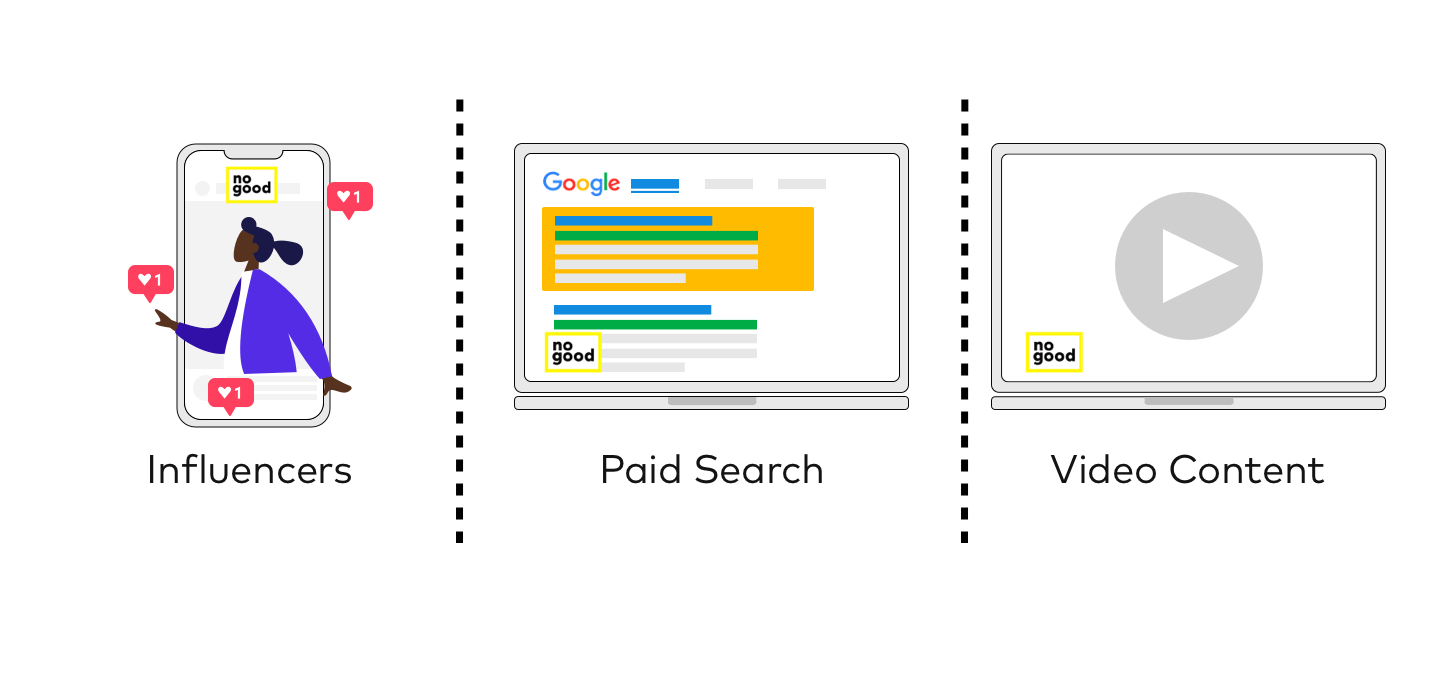
Marketing your Ecommerce Brand After Launch
“Hit the ground running” is usually not a term related to building an ecommerce business. There are ups, there are downs, and everything in between. What matters most, in the beginning, is creating demand for your product and getting feedback from customers so you can improve your economics, LTV, and retention.
At the end of the day, no amount of marketing dollars can fix a bad product, so you must launch your brand with the mindset of learning, rather than instant gratification or riches.
That being said, what are the best ways to launch?
We went over creating buyer personas, crafting our product messaging, which kind of website to get started with, how to optimize your site for SEO, how to leverage conversion data, how to craft a brand guideline, and how to understand our early-stage economics.
Now we will tell you some of our best strategies for creating demand around your brand at launch.
Paid Social
Platforms where consumers can connect with other consumers, which allow us to target specific audiences, are the holy grail of all ecommerce.
From mom-and-pop shops to Fortune 500 companies – everyone can benefit from using paid social media platforms when launching their ecommerce brand.
First off, there is the in-app engagement – when you see an ad you like or a video you enjoyed, how often would you share it with your friend or family? This phenomenon is called network effect, and while network effect can cultivate outside of paid marketing, social media brings a unique advantage by being the location where a potential customer can consume and share the things they may be interested in.
In comparison to Search ads or YouTube ads, for instance, there is no option to share or speak about what consumers are seeing – this creates a closed loop and limits the network effect a.k.a word-of-mouth.
When these dynamics are applied to a well-targeted ad campaign, your ideal audience is extremely likely to engage which then can result in purchases.
Additionally, paid social allows us to be where our customers are. Whether that’s a younger demographic or older, there is always a social app that your brand can join to keep your potential consumers within reach.
Influencer Marketing
Leveraging creators with existing followers is by far the easiest way to put your brand in front of a new audience. People have a greater chance of buying something when they hear about it from a friend or someone they like – like an influencer!
Many believe influencers are a dime a dozen, that their followers are uninterested and not engaged, and that using your marketing dollars on this will be a waste.
It is not.
To succeed in influencer marketing, you must do your research and document creators in your niche that relate to your ideal audience to increase the likelihood of a successful launch or successful influencer partnership.
Tools like socialblade.com can help you understand influencer’s engagement rates, how active their followers are, and whether they will make a good partner for your brand.
If we launched a comic book-inspired sneaker brand, we would reach out to every comic book, anime, or cosplay-related creator asking to barter products for content.
This will vary by the influencer, but if they like our sneakers, they are likely to accept a partnership and give our brand potential new customers.
Creating awareness for your brand is very easy with influencer marketing. We recommend utilizing this strategy – especially at launch.
Paid Search
Platforms like Bing and Google make up almost 95% of total paid search traffic, which means that our ideal customer is already on these platforms searching to their heart’s desire.
Paid search is more straightforward, as paid search channels use keywords for targeting new potential customers.
We recommend going as broad as possible when choosing which kinds of keywords you wish to appear for. Going broader will allow your store to collect more traffic and more data, at a cheaper cost.
Note: In some cases, this will not apply because there is higher competition from brands who already bid for these broad keywords. Look for keywords with high traffic volumes but low CPC (cost per click).
Paid search is a vital part of any ecommerce brand, as users go on Google to search for virtually everything nowadays. You need to make sure our brand is also showing up in ad results like our competitors — otherwise, you could be leaving money on the table.
Alternatively, paid search can provide brand awareness – while that is not its primary function, paid search represents the desire your customers have.
So a frequent buyer of sneakers online may be delighted to see a new comic book-inspired sneaker brand climbing up the paid ads results. Even if they do not buy from you right away, you have shown your new brand to a new potential customer – they might come back to see what it’s all about.
Content Marketing
In the digital world we live in today, content is king. This means that for you to compete with your competitors, you must adopt a content strategy.
Creating content should become a new muscle for you – which gets stronger and stronger over time. This content muscle is the link between you, your brand, and your audience – which will be used as a constant stream of communication.
Content is not exclusive to advertising — it’s a tool you will use to tell your potential customers about your brand, the products you sell, and just about anything else.
While content should definitely be used for advertising as well, content alone is how you refresh your brand’s message and offerings, consistently.
Content lives everywhere – from your product images to your product descriptions, to your social media pages, all the way onto your advertising. The more familiar you become with your content creation strategy, the easier it will be to scale your brand moving forward.
Launching an Ecommerce Brand is a Big Lift
Launching an ecommerce brand is no easy task – there is much more to learn when it comes to scaling, refining, and developing your ecommerce company, but we hope this gives you instruction into what launching an ecommerce brand is like.
If you need help launching or scaling an ecommerce brand, our growth experts can help. Feel free to drop us a line.






